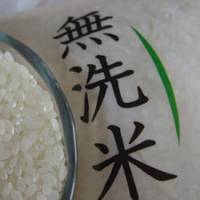Dear Alice,
I recently returned to Japan after 12 years back in my home country. I knew a lot of things would be different after such a long time away, but I never expected the rice to have changed! My former home-stay mom was always a stickler about washing the rice thoroughly before cooking, but when I went to visit the other day she didn't rinse it even once. She says she uses "no-wash rice" now. What the heck is that? And while you're at it, can you explain why it was ever necessary to wash Japanese rice in the first place?
Mary Ann, Toyama Prefecture
Dear Mary Ann,
I had a similar rice-washing stickler in my life — my friend Keiko's mother, who years ago tried to teach me how to do a proper job of making Japanese rice. The first step, she explained, is to wash the rice, although the English word "wash" doesn't begin to convey the energy you're supposed to expend. To give you a better idea, the verb in Japanese is togu, the same word used for honing a knife against a whetstone.
Under the tutelage of Keiko's mother, the process was a whole lot closer to "scrub" than "rinse." "Koshi o irete!" ("Put your back into it!), she'd insist, showing me how to shove the ball of my hand against the sludge of wet uncooked rice in the pot. "Kireina mizu ga deru made!" ("Keep at it until the water comes out clear!"), she'd demand, making me pour off the cloudy water and start again. Do this right, she warned, or your cooked rice won't have the right texture, taste or fragrance.
Now, with the advent of musenmai (no-wash rice), this ritual has disappeared from some but certainly not all kitchens. Keiko's mother, for one, is sticking to the old ways. "Naturally I've heard of musenmai," she sniffed when I called to ask. "But I don't use it. Who knows how they make the stuff!"
That seemed like a fair question, so I took it over to the Musenmai Association of Japan (Zenkoku Musenmai Kyokai), a Tokyo-based trade group, where I got a whole bowl of answers along with a sprinkling of useful rice terminology. The first thing I learned is that all Japanese rice starts out as genmai, the unpolished kernel in its natural state, which is what we call "brown rice" in English. Although some Japanese eat rice in this more natural state, most restaurants and homes prefer seihakumai, the ubiquitous white rice that has been processed to remove the germ (haiga) and bran (nuka). It may be processed, but it still has a sticky coating called hada nuka (literally "skin bran"), and that is what you're supposed to wash off before cooking.
Thanks to new technology introduced over the last 10 or 15 years, it's now possible for processors to remove this sticky coating so consumers don't have to. There are four different methods for doing this, but the lion's share is processed by what's called the B.G. (for "bran grind") method. Basically, it uses the adhesiveness of that sticky layer against itself: The rice is tumbled for seven seconds in a tube, just 30 cm in diameter, that causes the residual bran to stick to the sides of the tube while the rest of the kernel falls away clean. No chemicals or additives are used, and the process doesn't require any water.
The absence of water is significant because, believe it or not, the cloudy water consumers pour off when washing their rice has been identified as a significant source of water pollution in Japan. In the B.G. method, the bran comes out dry, so instead of going out with the wash water and ending up in rivers and streams, it can be diverted into fertilizer and animal feed.
If you're scoffing at the idea of Keiko's mom as polluter, do an Internet search with the words togijiru (which is what that cloudy rice-wash water is called)and kankyo ("environment") — I got 360,000 hits on Yahoo Japan just now. When togijiru goes down the drain and into lakes, rivers and the ocean, it provides an overabundance of nutrients for algae, which multiply to harmful levels and choke off other life. It's considered enough of a problem that the Tokyo Metropolitan Government urges residents to water plants with their togijiru rather than sending it down the sewer. And Shiga Prefecture, in an effort to protect Lake Biwa, has asked its citizens to switch to no-wash rice.
The environmentally minded co-op from which I buy rice encourages members to use no-wash rice by selling it at the same price as regular rice. But in general, a 5-kg bag of musenmai costs about ¥100 more than the same amount of regular rice, although that extra expense is partially offset by better yield and savings in water, time and effort. Despite the higher cost, an estimated 10 to 20 percent of Japanese households are now using musenmai, with higher use in big cities such as Tokyo and Osaka.
I was one of the early converts. I didn't know about the environmental benefit; I was just happy to give up the chore of washing. It tastes as good if not better than my imperfectly washed rice, but it's a harder sell for consumers raised on the notion that rice has to be washed to taste good. Ironically, even die-hard holdouts such as Keiko's mom have probably been eating no-wash rice without realizing it — it's widely used in restaurants, company cafeterias, and commercial food preparation. In fact, if you've ever picked up a bento lunch box from a major chain or grabbed a convenience-store onigiri rice ball, you can bet it was made with musenmai.
Puzzled by something you've seen? Send a description, or better yet a photo, with the address where you saw it to [email protected] or Alice Gordenker, A&E Dept., The Japan Times, 4-5-4 Shibaura, Minato-ku, Tokyo 108-8071



